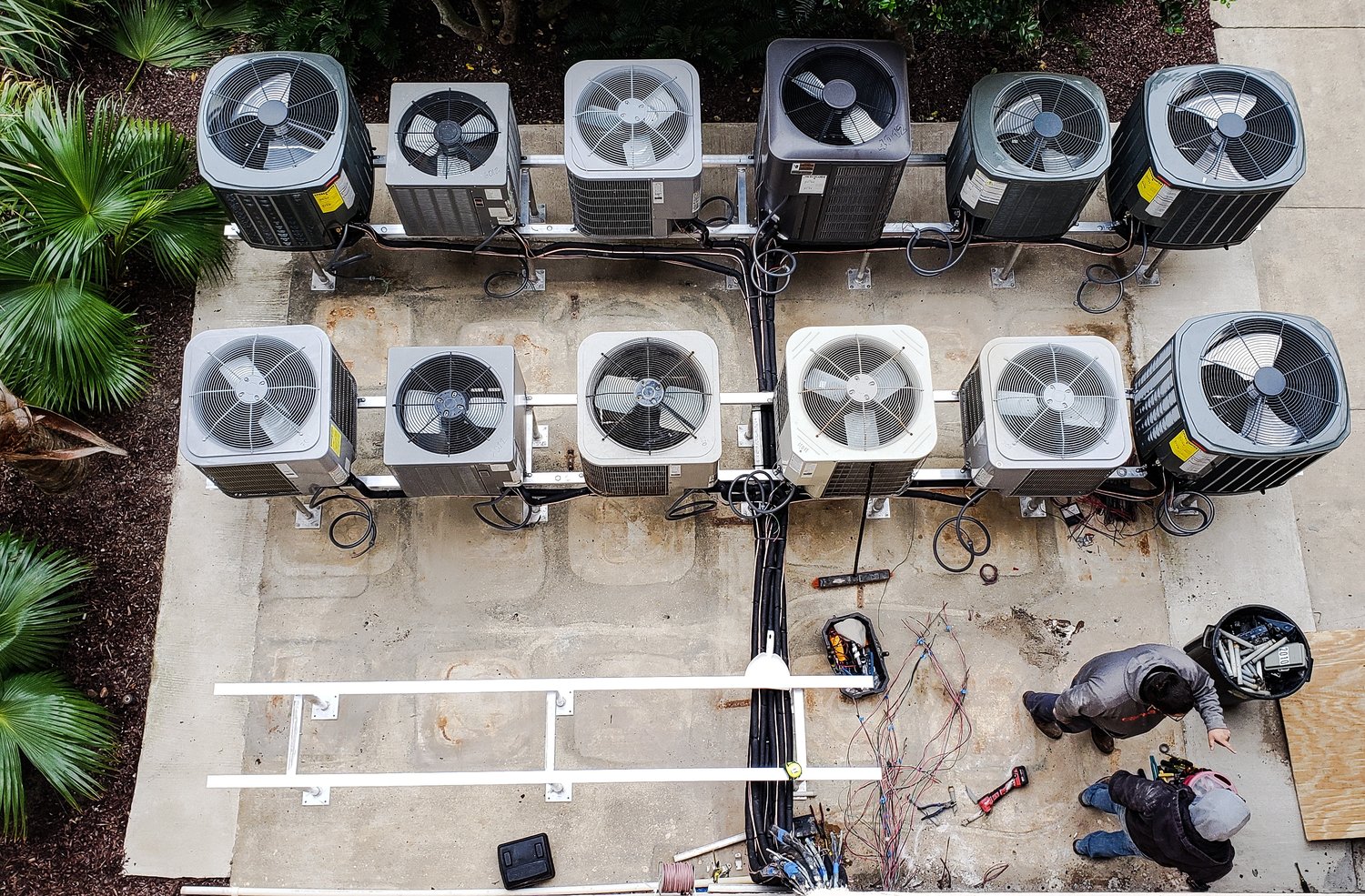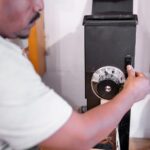Introduction to Heat Pumps
Heat pumps are energy-efficient devices that transfer heat from one location to another. They can be used for both heating and cooling purposes. These systems work by extracting heat from the air, ground, or water sources. Heat pumps are becoming increasingly popular due to their versatility and eco-friendly nature. In 2022, the global heat pump market was valued at $55.2 billion. This technology offers a sustainable alternative to traditional heating and cooling methods. Homeowners can choose from various types of heat pumps based on their specific needs and local climate conditions.
The efficiency of heat pumps is measured by the Coefficient of Performance (COP). A higher COP indicates better energy efficiency. Most modern heat pumps have a COP ranging from 3 to 5. This means they produce 3 to 5 units of heat energy for every unit of electricity consumed. Heat pumps can reduce energy consumption by up to 50% compared to conventional heating systems. They operate effectively in temperatures as low as -15°C (5°F). These systems can last for 15 to 20 years with proper maintenance, making them a long-term investment for homeowners.
Heat pumps contribute significantly to reducing carbon emissions. In the United States, heat pumps could lower household emissions by up to 54%. The European Heat Pump Association reports that heat pumps installed in Europe in 2021 will save 44 million tons of CO2 over their lifetime. This technology plays a crucial role in achieving climate goals. Many countries offer incentives and rebates for installing heat pumps. For instance, the UK government provides grants of up to £5,000 for air source heat pumps through the Boiler Upgrade Scheme.
The installation process for heat pumps varies depending on the type and existing infrastructure. On average, it takes 2 to 3 days to install an air source heat pump. Ground source heat pumps may require 3 to 5 days for installation. The cost of installation can range from $4,000 to $25,000, depending on the system size and complexity. However, the long-term energy savings often justify this initial investment. Proper sizing is crucial for optimal performance, with most residential systems ranging from 2 to 6 tons in capacity.
Air Source Heat Pumps: Efficiency and Versatility
Air source heat pumps extract heat from the outside air, even in cold temperatures. These systems are versatile and can be used for both heating and cooling. They consist of an outdoor unit (compressor and condenser) and an indoor unit (air handler). Air source heat pumps are suitable for various climates and can operate efficiently in temperatures as low as -20°C (-4°F). The average lifespan of an air source heat pump is 15 years, with some high-quality units lasting up to 20 years.
The efficiency of air source heat pumps is measured by the Seasonal Energy Efficiency Ratio (SEER) for cooling and Heating Seasonal Performance Factor (HSPF) for heating. Modern units typically have SEER ratings between 13 and 21, and HSPF ratings between 7.7 and 10. Higher ratings indicate better efficiency. These systems can reduce electricity use for heating by 50% compared to electric resistance heating. Air source heat pumps are particularly effective in moderate climates, where winter temperatures rarely drop below freezing.
Installation of air source heat pumps is relatively straightforward and less invasive than ground source systems. The outdoor unit requires about 1 square meter of space and should be placed in a well-ventilated area. Indoor units can be wall-mounted, ceiling-mounted, or integrated into existing ductwork. The average cost of an air source heat pump system ranges from $3,000 to $8,000, depending on the size and features. Many homeowners recover this cost through energy savings within 5 to 10 years.
Maintenance for air source heat pumps is minimal but important for optimal performance. Homeowners should clean or replace filters every 1 to 3 months. The outdoor unit should be kept clear of debris and vegetation. Annual professional inspections are recommended to ensure efficient operation. These systems operate quietly, with noise levels typically between 40 and 60 decibels, comparable to a refrigerator. Modern inverter-driven compressors further reduce noise and improve efficiency.
Ground Source Heat Pumps: Harnessing Earth’s Energy
Ground source heat pumps, also known as geothermal heat pumps, extract heat from the ground. These systems use a network of underground pipes filled with a heat-transfer fluid. Ground source heat pumps are highly efficient because the earth’s temperature remains relatively constant year-round. They can achieve efficiencies of 300% to 600%, meaning they produce 3 to 6 units of heat for every unit of electricity consumed. The average lifespan of a ground source heat pump is 20 to 25 years for the indoor components and 50+ years for the ground loop.
There are two main types of ground source systems: horizontal and vertical. Horizontal systems require more land area but are less expensive to install. They typically need 400 to 600 square meters of land for an average home. Vertical systems are suitable for smaller lots but require drilling to depths of 45 to 150 meters. The choice between horizontal and vertical depends on available land, soil conditions, and local geology. Installation costs for ground source heat pumps range from $10,000 to $30,000, but they offer the highest long-term savings.
Ground source heat pumps can reduce energy consumption by up to 70% compared to conventional heating systems. They work efficiently in a wide range of climates, from hot to very cold. These systems can also provide domestic hot water, further increasing their utility. The U.S. Environmental Protection Agency (EPA) recognizes ground source heat pumps as the most energy-efficient, environmentally clean, and cost-effective space conditioning systems available. They can lower electricity use for heating by 30% to 60% compared to other heating systems.
Maintenance requirements for ground source heat pumps are minimal. The underground components rarely need attention, while the indoor unit requires similar maintenance to a conventional HVAC system. Annual professional inspections are recommended to ensure optimal performance. These systems operate very quietly, with indoor noise levels comparable to a refrigerator. The absence of an outdoor unit eliminates exterior noise and improves aesthetics. Ground source heat pumps can also increase property values by an average of 10% due to their energy efficiency and longevity.
Other Heat Pump Technologies
Water source heat pumps extract heat from water bodies such as lakes, rivers, or wells. These systems are highly efficient but require proximity to a suitable water source. Other heat pumps include absorption heat pumps, which use heat as their energy source instead of electricity. Hybrid heat pump systems combine heat pump technology with a conventional furnace for optimal efficiency in extreme climates. These alternative technologies offer unique solutions for specific situations and environments.
Absorption heat pumps, also known as gas-fired heat pumps, use ammonia as the refrigerant and various heat sources such as natural gas, propane, or solar-heated water. They are particularly useful in areas without reliable electricity supply. The efficiency of absorption heat pumps is measured by the Coefficient of Performance (COP), typically ranging from 1.2 to 1.8. While less efficient than electric heat pumps, they can be cost-effective where electricity prices are high relative to gas prices.
Hybrid heat pump systems, or dual-fuel systems, combine an electric heat pump with a gas furnace. They automatically switch between the two based on outdoor temperature and energy prices. This combination provides optimal efficiency and comfort in regions with varying climates. The heat pump operates during moderate temperatures, while the furnace takes over in extreme cold. Hybrid systems can reduce heating costs by 15% to 35% compared to a standalone furnace or heat pump.
Emerging technologies in the heat pump sector include CO2 heat pumps and thermoacoustic heat pumps. CO2 heat pumps use carbon dioxide as a refrigerant, offering excellent performance in cold climates and for water heating. Thermoacoustic heat pumps use sound waves to pump heat, potentially offering higher efficiency and reliability. These innovative technologies are still in development but show promise for future applications. As the heat pump market grows, we can expect continued advancements in efficiency, performance, and environmental sustainability.





